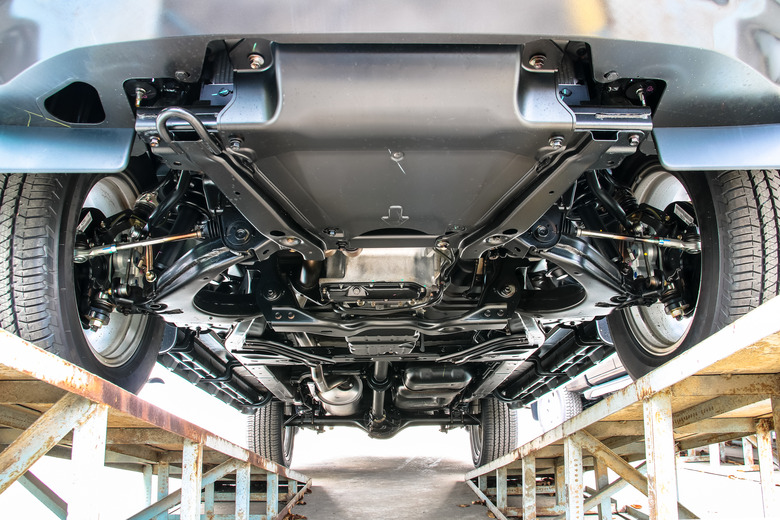How To Find A Leaking Air Brake Chamber
Things Needed
- 1 small ball-peen hammer
- 1 1/2-pound piece of dry ice
- 12 ounces of room-temperature water
- 12-ounce plastic cup or metal can
Air brakes, as found on many large trucks over 10,000 pounds of gross weight, and on passenger buses, are composed of an air compressor unit, air lines, and air brake chambers–also called "pots." Of all the components, the air chambers wear out the most over time since they have moving parts within, mainly a "diaphragm." When a small air leak occurs, it may become difficult for the vehicle to maintain adequate continuous air pressure, causing the brakes to set if the pressure gets too low. Small leaks are difficult to find, but there is a very simple and useful means to locate the offending brake chamber.
Step 1
Use a ball-peen hammer to break a piece of dry ice into small sections, which may be placed into your plastic cup or metal can. Fill the container about half full with dry ice.
Step 2
Pour room-temperature water into the container holding the dry ice until it is 3/4 full. This will cause a large quantity of fog to rise out of the container as the frozen carbon-dioxide (dry ice) is released from the water.
Step 3
Crawl under the area of the vehicle in which you are able to hear the air leak, and slowly advance the container, watching the direction of the fog carefully, as the air from the leaking area will blow the fog in the opposite direction. Continue advancing until you have found the precise location of the air leak and then determine if it may be repaired or if the air brake chamber needs to be replaced.
TL;DR (Too Long; Didn't Read)
Start up the vehicle and allow the air brake system to become fully charged with air pressure to ensure the strongest possible indication of the whereabouts of the leak.
Dry ice may be difficult to find when not looking in the right places. Many Wal-Mart Supercenters have begun selling dry ice, and it may also be located in some Safeway stores and other grocery stores, camping supply locations, AirGas distributors, and locations where compressed CO2 (Carbon Dioxide) is sold. In addition, many "Flying J" truck stops have dry ice.
Cite This Article
MLA
Schanaman, Kurt. "How To Find A Leaking Air Brake Chamber" sciencing.com, https://www.sciencing.com/how-5931143-leaking-air-brake-chamber/. 30 January 2010.
APA
Schanaman, Kurt. (2010, January 30). How To Find A Leaking Air Brake Chamber. sciencing.com. Retrieved from https://www.sciencing.com/how-5931143-leaking-air-brake-chamber/
Chicago
Schanaman, Kurt. How To Find A Leaking Air Brake Chamber last modified March 24, 2022. https://www.sciencing.com/how-5931143-leaking-air-brake-chamber/
